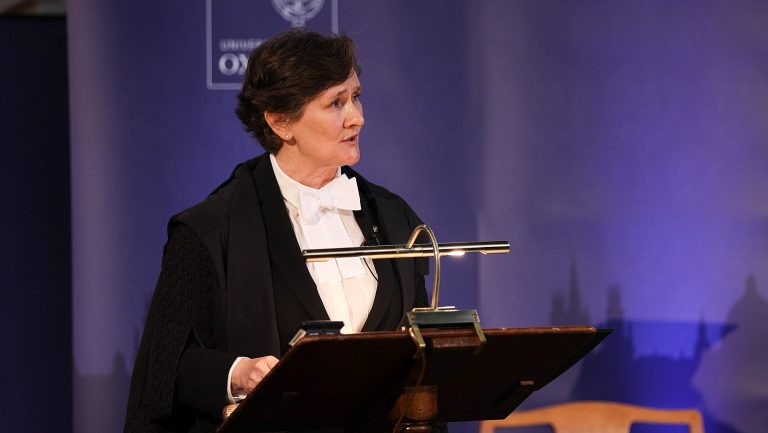As the Cherwell Investigations team, we take our job very seriously. A big part of what we do is Freedom of Information (FOI) requests – which allow us to ask for information on any topic (yes, any!) from public authorities, for example the University and colleges.
Cherwell handles a lot of data, but unfortunately, not everything can make it into our fantastic print editions. So, dear reader, we thought we would treat you with some of our best finds of the year, curated by our excellent investigative student journalists.
Expensive grass
Do you think that the University has its financial priorities straight? At Cherwell, we’re not always so sure, so sometimes we simply ask them how much they spend on things! Recently, we wanted to check how much it cost to refurbish the lawn outside of the Radcliffe Camera this September.
That amounted to an eye-watering £17,854.40, which – according to the University – “included labour, topsoil, and turf”. In their defence, the grass did look really good, but maybe they could have saved a bit of cash and done without the squiggly lines.
Following the OA4P encampments outside the Natural History Museum and around the Radcliffe Camera in Trinity term 2024, the University had spent £44,699 and £19,771 for each site respectively on grounds maintenance and returfing. Compared to the Vice-Chancellor’s £666,000 pay package, perhaps it’s not that bad – at least students (and tourists) get nice lawns out of it! The University said that “repairs were carried out to a standard appropriate to the damaged property”.
Release the files!
It was recently reported that Oxford had repeatedly mishandled sexual harassment complaints involving senior male academics. Professor Soumitra Dutta, the former Dean of Saïd Business School, stepped down from his role in September after the University upheld several harassment complaints made against him by a female academic.
Cherwell attempted to investigate the matter, and submitted several FOI requests regarding Dutta’s appointment. The University did comply, but appears to have taken notes from the Trump administration on how to redact documents (read: black out absolutely everything), citing personal data and GDPR exemptions.


Schrödringer’s CCTV footage
One of the contentious points of the University’s controversial disciplinary proceedings against the protesters that broke into the Wellington Square offices in Trinity Term 2024 was the CCTV footage of the reception. The University claimed that the recording proved that an activist assaulted the receptionist, which OA4P vehemently denies and claims instead that the footage “disproves the false allegation that acts of violence took place”.
Thames Valley Police did not pursue the charges against the protesters, and the University’s case was ultimately dropped on procedural grounds. Cherwell journalists tried to obtain this CCTV footage, used on multiple occasions during disciplinary hearings according to our sources, but hit a brick wall. Or rather, a shifting, moving, vanishing brick wall, Diagon Alley style.
The University responded with an exemption on November 14th 2024, admitting that it held the data but refusing to disclose it on the grounds that, after grouping the FOI requests together, locating the information would be too time-consuming. On March 3rd 2025, they told Cherwell that they didn’t hold the footage anymore, which had been deleted “in line with the retention provisions in the University’s CCTV code of Practice”.
However, on May 27th, the pivotal evidence magically reappeared! Responding to an FOI request, they once again declined to disclose it, claiming this time a personal data exemption. So, do they have it or not? The University told Cherwell that “an error was made in good faith in the March response, [and] there was no pretence by anyone”.
Bezos on top
You didn’t know that you needed this information, but you’re getting it anyways. Cherwell made some unlucky porters compile lists of the number of parcels received by each college, as well as a breakdown by courier. Unsurprisingly, Amazon comes up on top – with around 38% of all parcels being delivered courtesy of Jeff Bezos.
On average, colleges received around 3,000 parcels in Michaelmas terms, and around 2,000 in Hilary and Trinity. Blame the freshers ordering room decoration online? A clear outlier was Worcester College, ordering over 6,000 parcels per term on average last year. Maybe Worcesterites are online shopping addicts?
All in all, based on data from 12 colleges – the others did not comply or did not hold the data – Cherwell estimates that Oxford students receive on average over 250,000 parcels a year.

My Oxford Year, Their Netflix Cash
This summer, while everyone was busy mocking My Oxford Year or letting their anger out on Oxfess, the Investigations team decided to ask every public authority in town how much they received from Netflix for the shooting of the film. But (surprise surprise), they’re not telling us.
The University took over twice the statutory deadline (20 working days) to get back to us, refusing to disclose the information and claiming it would take them too long to find. Cherwell appealed the decision, with the University’s response being overdue for over a month at the time of writing. Magdalen College also refused to disclose this information, claiming that it would “prejudice [their] commercial interest”, while the Oxfordshire County Council simply did not respond to our request.
The ones that did revealed that the filming was not as lucrative as you might expect: Hertford college made £2,160 renting a room to the production team, and the City Council made £1,365 from filming inside of the Covered Market. Given how abysmal the film was, we’d hope they would have made a little more than that!
You wouldn’t steal a car!
If you weren’t too hungover, you may remember your college Dean or Bursar trying to threaten you during Fresher’s Week with potential fines if you were caught streaming or downloading content illegally on Eduroam. In the spirit of scientific discovery, Cherwell went myth-busting – and we debunked them.
In total, 15 colleges reported issuing fines to students for illegally streaming or downloading copyrighted content on University networks, primarily through torrenting software. This amounted to at least 59 cases over the 2023-25 period. There were no cases of staff being caught doing this – either tutors know how to behave, or they haven’t quite figured out torrenting just yet.

The vast majority of colleges reported less than five instances, with Green Templeton being the clear outlier with 11 cases. One individual at Wadham was found streaming copyrighted content four times within the same year – you’d think they would have learned their lesson the first time around!
The standard fee applied by the University IT services and passed on to students through colleges is £60, though a few colleges add administrative fees, the most expensive being St John’s College at £100. Cherwell understands that no disciplinary action was taken against students for this. With the speed of Eduroam, good luck trying to stream or download anything anyways!
See you in 2026
That’s it from us in 2025! FOIs are at the heart of what Cherwell Investigations does, and we even asked the University how many they receive each year. In 2024, it received 1,093 requests – fully complying with only 566 of them and partially complying with 307. The University did not supply the information for 170 of the requests and did not hold the information for the remaining 50.
Despite the delays, hurdles, and redactions, Cherwell keeps on investigating. With FOIs being one of our main tools to make sense of how decisions are made behind closed doors and to uncover what the University is up to, we will keep on asking, (probably) much to their displeasure.
Regarding Professor Dutta’s appointment, a University spokesperson told Cherwell: “Sexual harassment has no place at Oxford. Our sympathies and thoughts are with anyone who has experienced harassment or misconduct. We strive to ensure that Oxford is always a safe space for all students and staff. We take concerns seriously, applying clear, robust procedures. Support for those affected is a priority, and we take precautionary and/or disciplinary action where justified.
“We reject any suggestion that the University tolerates harassment or does not prioritise people’s safety. While we cannot comment on individual cases, we are committed to continuous improvement and have strengthened our approach over recent years. Our Single Comprehensive Source of Information sets out our approach, support and training. We encourage anyone who has a concern to raise it.”
With special thanks to Amelia Gibbins, Laurence Cooke, and the Cherwell Investigations team for their FOI contributions.










